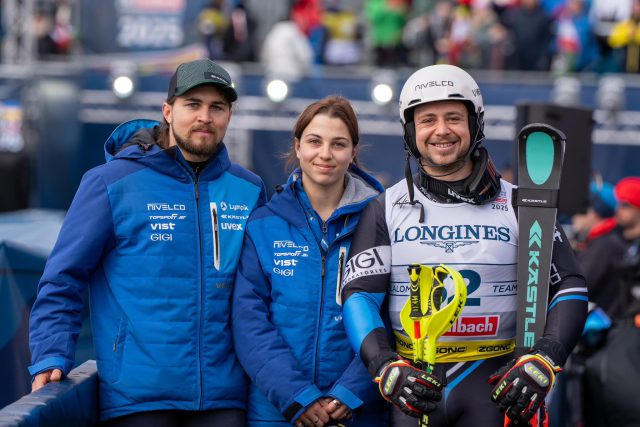
As we reported in the previous issue of our magazine, both of our athletes, Benjamin and Barnabás, have successfully returned to the race course after their serious injuries. During the rehabilitation period, both worked hard to regain their old form and return to racing.
Preparation Beyond the Arctic Circle
This year’s on-snow training began in Finland, where, thanks to snow preserved from the previous season, it was possible to train under race conditions as early as the end of October. Beyond the Arctic Circle, the days are already getting shorter at this time of year, and the breathtaking Northern Lights are often visible at night. In Levi, where World Cup races are also held, the world’s best technical skiers gather for training during this period, including the three athletes from NIVELCO SE.
Gradual Return to Competition
The preparation went smoothly, though after their long break the boys could only return to racing gradually.
World Championships in Saalbach
The biggest event of the season was undoubtedly the World Championships, which were held once again in Saalbach, Austria, after 1991. This location is particularly memorable for me, as I participated in my first World Championships here as a competitor, so the course and the environment were not entirely unfamiliar.
New Rules, New Challenges
The World Championships once again brought success for the NIVELCO male athletes, despite the fact that one of their strongest events – the alpine combined – was changed. Previously, this event favored those who performed well in both speed and technical disciplines. However, under the new rules, it was turned into a team event: each nation had to nominate separate competitors for the two disciplines requiring different technical skills. Since we have only one female athlete, Noa could not participate in this event.
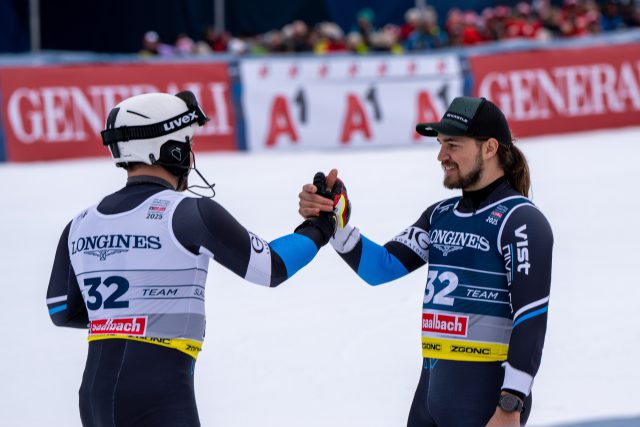
Sibling Pair in the Field
The boys, however, performed excellently: under the new rules of the alpine combined, they fought hard to secure a prestigious twentieth place. It is worth noting that up to four teams per nation could enter this event. Barnabás started with a great downhill run, finishing twenty-fifth, while Benjamin’s smart slalom brought our team up to twentieth place. We are especially proud that they were the only sibling pair in the entire field!
Memorable Moments in the Finals
Another memorable moment was when Barnabás and Benjamin – as a sibling pair – advanced from the qualifiers into the top twenty-five, thus qualifying for the finals. For the women, there are no qualifiers, so Noa automatically made it to the finals in both events based on her previous results. Unfortunately, she was unable to finish her second run in giant slalom, and in slalom, she was eliminated in the first run.
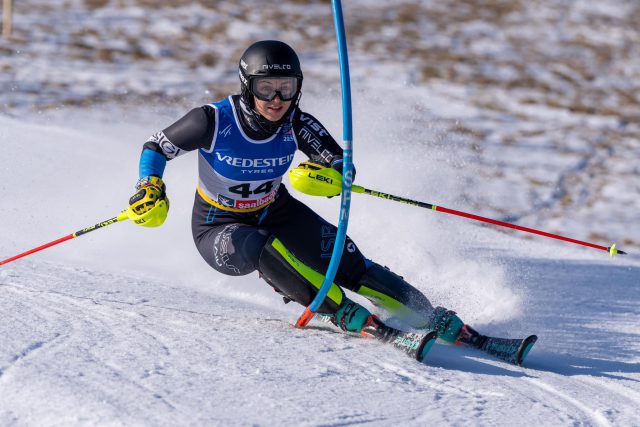
A Successful Season and Olympic Preparations
This season proved to be truly successful for the athletes of NIVELCO SE. The team members achieved a number of outstanding results that are a source of great pride.
Noa Szőllős stood on the top step of the podium three times and claimed silver medals on six further occasions, once again demonstrating her exceptional form and perseverance.
Barnabás Szőllős finished the season with one gold and one silver medal, and placed in the top ten an impressive fifteen times, confirming his consistently high level of performance.
Benjamin Szőllős also delivered excellent results: he secured one first and one third place, and reached the top ten on six additional occasions.
– However, there is no time to rest on these achievements: the team will already begin preparations in May for the biggest challenge of the next season, the 2026 Winter Olympics in Milan. The athletes are determined and motivated to continue their hard work, aiming to delight their supporters and fans with similarly outstanding results in the future.
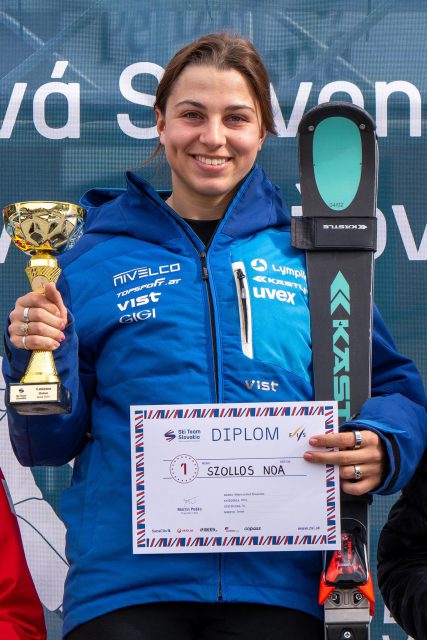
Noa
– The 2024/25 season and with that my first full season on the Europa cup tour has come to an end.
We started off in Levi, Finland with some great training between October–November. My first race of the season was also in Levi, the Slalom World Cup, before heading back to Central Europe for the first Europa Cup races. After the great GS results in December, we started focusing more on Slalom over the new year. In Zell am See, Austria I scored my first EC points in slalom and a few more right after in Spindl, Czech Republic. After a trip to Norway for the EC finals I finished the season in Val-d’Isère, France, making my second-best points in slalom.
It has been a long and difficult season. The ever-changing weather has made racing more and more unpredictable and unforgiving over the years, as seen by the unprecedented number of injuries that keep growing season by season, but we can only hope and keep training and fighting to stay healthy and get better every year.
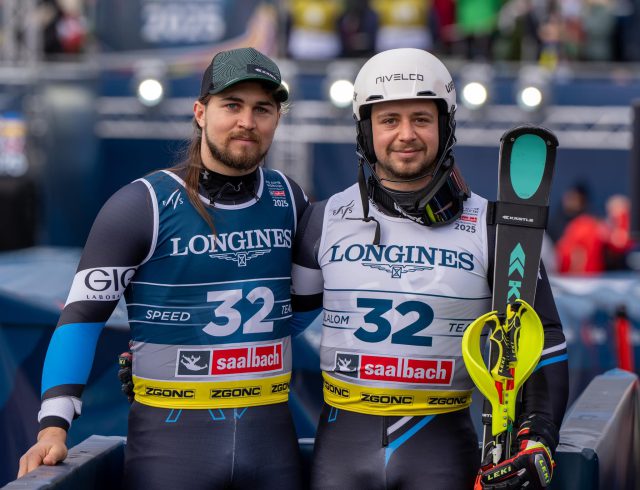
Benji
– This season marked my first comeback after a major injury—a torn ACL that kept me off skis for nearly a year. Standing on skis again in August, 11 months after the injury, was an unforgettable moment that reignited my passion for the sport. By October, 13 months post-injury, I returned to gate training. While I was physically well-prepared thanks to a disciplined summer of rehab and conditioning, the transition back into high-speed training was mentally tougher than expected.
– Although my knee held up strong—even in demanding conditions—the mental barrier, especially at speeds over 80 km/h (50 mph), proved to be my biggest challenge. As a result, while I was able to regain my pre-injury form in slalom within a few months, I continued to struggle with confidence in giant slalom and ultimately had to step away from super-G and downhill for good.
– Despite not reaching my previous performance level in all disciplines, I’m proud to have achieved the basic Olympic qualification quota in both slalom and giant slalom. This gives me the chance to continue chasing my Olympic dream and to keep on fighting from here.
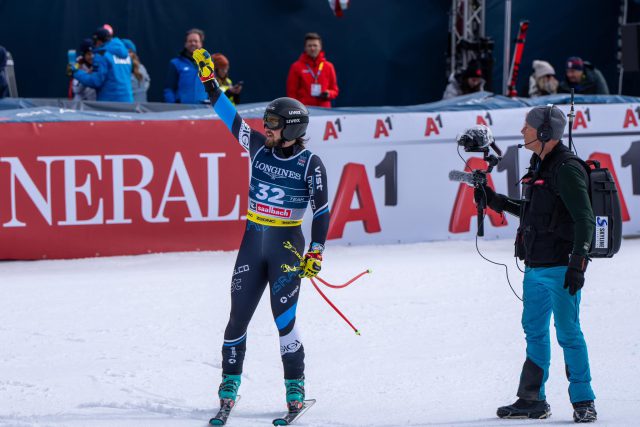
Barni
– This winter was my comeback season after getting injured last January in Kitzbühel. I lost all my FIS points, which meant I dropped out of the world rankings and had to start again from the back of the f ield. That meant racing with high bib numbers and worse snow conditions, making everything harder.
– At first, I struggled to score points again—especially since starting from the back is never easy. I managed to get my slalom points just before the World Championships in Saalbach, but I was still missing results in every other discipline.
– The World Champs went really well. I had good runs in the downhill and finished P20 in the Alpine Combined, racing together with my brother, which was a special moment.
– After that, the focus was fully on getting my FIS points back. I had great results in super-G and Downhill at the Irish Championships in Passo San Pellegrino, which helped me climb back into the top 150 in the world rankings for Downhill. If I stay there, I’ll be allowed to race World Cup again next winter.– In the last races of the season, I finally picked up some points in Giant Slalom—the last event where I hadn’t scored this season.
– Overall, I’ve made solid progress in every discipline and even set some personal bests. I’m not back to where I was before the injury yet, but I’m getting closer with every race.
